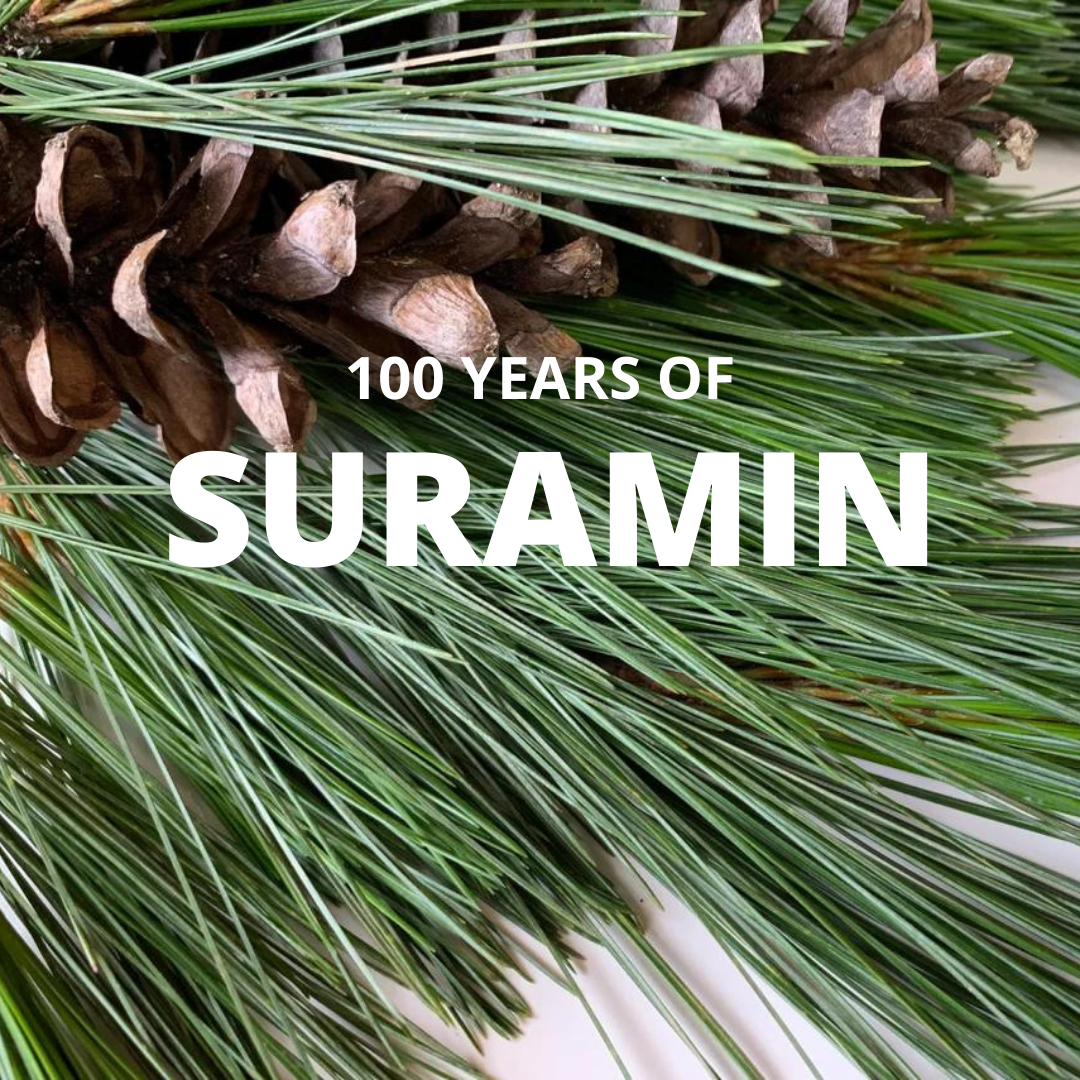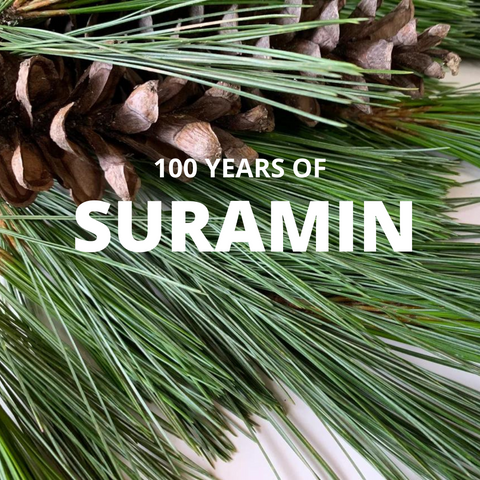
100 Years of Suramin
Suramin is strongly inhibitory to the replication of the coronavirus spike protein. It also has an inhibitory effect against components of the coagulation cascade and the inappropriate replication and modification of RNA and DNA. Excessive coagulation causes blood clots, mini-clots, strokes, and unusually heavy menstrual cycles, which are now being daily reported to VAERS post-vaccination. Recent research has shown it to be an in vitro inhibitor of SARS-CoV-2 infection in cell culture by preventing viral entry. For a list of published research confirming the effectiveness of our Pine Needle Tea treating a wide variety of disease (including links) visit our Health Benefits page. Ready to start your natural healing journey? Order HERE.
When suramin was introduced for the treatment of African sleeping sickness in 1922, it was one of the first anti-infective agents that had been developed in a medicinal chemistry program. Starting from the antitrypanosomal activity of the dye trypan blue, synthesized in 1904 by Paul Ehrlich, Bayer made a series of colorless and more potent derivatives. Molecule 205 was suramin, synthesized by Oskar Dressel, Richard Kothe, and Bernhard Heymann in 1916. Pine needle oil was used as a botanical source for trypan blue. Sleeping sickness (also known as human African trypanosomiasis was at the forefront of research at that time, not a neglected disease as it is today, and the development of suramin was a breakthrough for the emerging field of chemotherapy.
Trypan blue is so-called because it can kill trypanosomes, the parasites that cause sleeping sickness. Trypan blue is derived from toluidine, that is, any of several isomeric bases, C14H16N2, derived from toluene. Trypan blue is also known as diamine blue and Niagara blue. Toluene is also a derivative of pine oil. The compound was first isolated in 1837 through a distillation of pine oil by the Polish chemist Filip Walter, who named it rétinnaphte.
Pine-Sol was based on pine oil when it was created in 1929 and during its rise to national popularity in the 1950s. However, as of 2016, Pine-Sol products sold in stores no longer contain pine oil to reduce costs.
Yet pine needle tea provides a similar, if not superior, benefit, due in part to the fact that it is a direct mild extract of the whole herb leaving many of its properties still intact that might be destroyed by excessive heat during distillation and further dissection of its many nutrient components.
There are many great resources online that discuss the compound suramin and how and the many potential health benefits. We've compiled the following list for you:
Eastern White Pine Tree Needles: A Natural Source of Anti-Infective Compounds
An Antidote To The COVID Vaccine Contagion?
Is Pine Needle Tea, Suramin, & Shakimic Acid The Answer To Covid Vaccine Shedding?
Suramin shows promise as COVID-19 treatment
Suramin and Autism
Century-Old Drug Tested in Boys with Autism

The information provided on this website is intended for general informational purposes only. It is not a substitute for professional medical advice, diagnosis, or treatment. Readers are advised to consult their healthcare providers with any questions or concerns they may have regarding their health or medical conditions. The website and its content creators shall not be liable for any damages resulting from the use or inability to use the information on this website.


